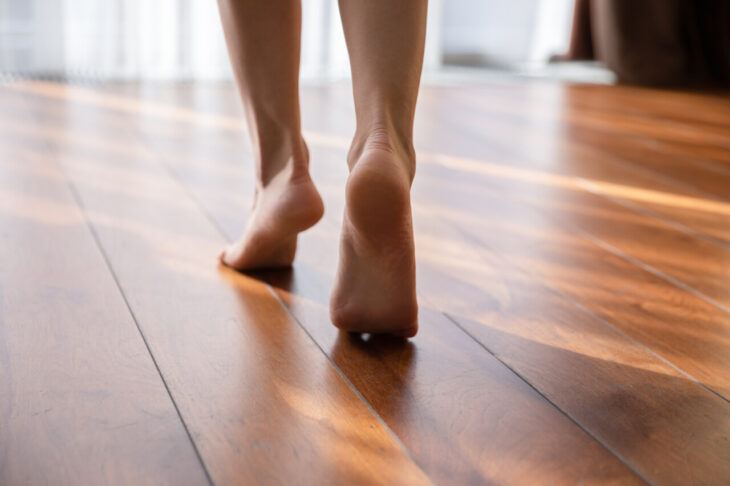
The Importance of Good Foot Posture
Healthy foot posture is an important part of maintaining not only healthy feet for a lifetime, but also avoiding other misalignments that can affect the biomechanics of the entire body. An assessment of the foot and ankle can determine not only the health of your feet, but also how your bones, muscles and joints may be affected by the way you stand or your gait when you walk.
Physical therapists are experts in assessing the biomechanics of the foot and offering treatment options and exercises to improve foot posture. The exam itself is simple and pain free.
A foot assessment starts with the foot in a neutral position by laying on a table with your foot over the edge. Your therapist will use their hand to move the foot forward and back. Doing so they compare an imaginary line that runs through the midline of your calf to one that runs vertically through the calcaneus (the back of the foot). This can evaluate what’s called the rear foot posture. There is almost always some angle and it is normal to find an angle of about 2-8 degrees on a healthy individual.
Next ,they look at the front foot posture – with this evaluation they compare the angle of a line through the metatarsals (the bones where the toes connect to the foot) to one perpendicular to the line on the back of the foot from the earlier exercise. From this evaluation they are able to evaluate for: Forefoot Varus or Valgus – conditions that indicate the foot is absorbing too much shock. This can lead to knee pain, shin pain, Achilles’ tendonitis, iliotibial (IT) band pain, plantar fasciitis, and even low back pain.
The therapist will be assessing both supination and pronation of the foot.
- Supination means that when you walk, your weight tends to be more on the outside of your foot when you stand or walk – your foot may be leaning outward. Excessive supination can cause excess strain on your ankles, and it may lead to shin splints, calluses, or bunions on the outer side of your foot, and pain in your heels and balls of your feet.
- Pronation means that when you walk, your weight tends to be more on the inside of your foot, or your feet are leaning inward, and your arch flattens out. Often individual are born with this tendency or it may occur when the arch in the foot is too high, or your leg lengths aren’t even. It can also be a result of an injury, overuse, or walking or standing on hard surfaces frequently. Excessive pronation may mean that you develop pain in the arch of the foot, heel, ankle, shin, knee, hip, and back pain.
The final test is the weightbearing assessment. You will be asked to stand in front of your therapist, while they assess the ankle joint, where the tibia, fibula and talus meet. This is called the talar dome. Using one hand, while internally and externally rotating the tibia with the other hand, they can measure the drop in the arch of the foot (the navicular drop). A drop of more than 10 mm is considered abnormal and could benefit from treatment or orthodics.
Variance in foot posture is a normal between different people. In fact, it isn’t uncommon to see a combination of these foot postures in an individual during a biomechanical assessment. All of these postures can also present as compensated or uncompensated during weightbearing and the gait cycle.
A physical therapist can help!
Improving foot posture can include a variety of different exercises that are simple to do at home – arch strengthening, calf stretching and even hip strengthening. Orthotics, custom made inserts for the shoes, may also be a good treatment option to correct issues with foot posture. Orthotics can be helpful to support the bones on the top of the foot and help stop turning the feet outward or twisting inward. A foot and ankle doctor would evaluate your foot and can prescribe orthotics to correct problematic foot postures, therefore reducing the chance of an ankle sprains from ankle instability, heel spurs, Plantar Fasciitis or tendonitis. A Foot Posture Index is a scale therapists use to assess and categorize foot posture. It can quantify the amount of supination or pronation and offers a way to measure our treatment and the change over time.
Your therapists can talk to you more about treatments that may be beneficial for good foot health. It is important to note that a little bit goes a long way with treating foot posture. Walking one mile can cause upwards of 127 tons of force to the feet and running one mile nearly doubles that number to over 220 tons of force to the feet. So, even improving the foot posture, load, and mechanics a small amount can make a big difference.